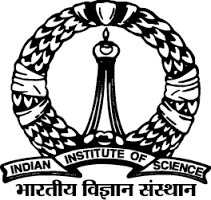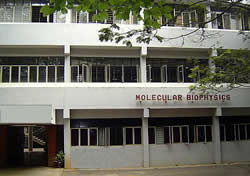



| Home | Research | Publications | Group Members | Resources | Gallery | Contact Us |
The following problems in structural biology are being investigated through Molecular Dynamics [MD] and Protein Structure Network approaches [PScN]:
Allostery in Proteins
Allostery is a remote control process that regulates protein function. Models for understanding this phenomenon have evolved over several decades based on phenomenological, structural, and abstract concepts. Currently, it is being pursued by simulations and network analyses of protein structures to capture drastic (large-scale) and subtle changes induced by cognate ligands, at atomistic level. tRNA synthetases being excellent examples of allostery, we have investigated them in detail in our laboratory. The approach followed is, to generate equilibrium ensemble conformations of various states of liganded proteins (including synthetase-tRNA complexes) by molecular dynamics simulations. The ensembles are investigated for network metrics such as communication paths between the anti-codon binding site and the amino acid activation sites, changes in the local clique/community architectures to capture the changes in plasticity as a function of ligand, identification of alternative paths of communication and so on. A general mechanistic model for amino acylation of cognate tRNA is provided based on these studies [1].
Other systems of interest are: Iron regulatory protein- IdeR in Mycobacterium tuberculosis, Xenobiotic nuclear receptor PXR, Human Gamma-D Crystallin (HGDC) and Aspartic Proteinases.
Weighted Protein Structure Networks and Fold Organization
The problem of diverse sequences of low homology adopting the same fold is being addressed. Our approach has been to identify common network parameters such as edges, hubs, cliques and communities which stabilize a given fold. Such parameters have been identified in common folds such as TIM Barrel, Rossman fold [2,3] and other folds are being investigated. Further the PScN models are made more robust by incorporating edge weights based on various schemes. The results from such network approaches suggest that interaction conservation is the driving force in the formation of specific folds and hence, the capability of modelling techniques will greatly enhance by incorporating this factor, particularly in low homology template cases.
Exploration of protein folding problem in terms of network properties
Determining the correct structure of a protein, given its sequences, has remained a challenging problem. Significant advances have been made in protein structure prediction methods in the last few decades. Further the community-wide experiment, Critical Assessment of Protein Structure Prediction (CASP) has been promoting this activity. Our own group has adopted the network approach to capture the non-covalent global connectivity information unique to native proteins. Specifically, our focus has been on identifying the extensive connectivity due to side-chain interactions through Protein Structure Network (PScN) approach, which is not systematically characterized by the traditional methods. The properties of a set of large number of native proteins and sets of decoy structures have been investigated from network perspectives. They are used to build Support Vector Machine (SVM) algorithms to explore native-like features in modelled structures. This provides a tool for ranking the models, particularly from the side-chain connectivity network point of view. The web-servers GraProStr and the PSN-QA module in this server have been developed to evaluate quality of protein structure models and also to provide their ranks [4,5]. The programs have been employed in validating some of the models generated by CASP-11.
PSNs provide unique information regarding side-chain local and global connectivities. Information mining from PSN is constantly being refined. For example, physics based percolation theory concepts are used to identify a threshold strength of interaction to extract information on global connectivity and graph spectral methods are employed to obtain network metrics like clusters, communication paths, using realistic interaction strengths (weighted edges) derived from protein structures [6,7]. The PSN approach is providing valuable information on problems in structural biology, such as, allosteric paths and the protein structure validation.
Protein structure comparison: using graph spectral methods
The three-dimensional structure of a protein is dictated by an optimal non-covalent interaction between different amino acids in the chain. They can be represented at backbone level by connecting the c-alpha atoms or at side chain level by considering the interactions of all atoms of the side chains.





Copyright © 2015 SV Laboratory, All Rights Reserved. Maintained By SV Group. |